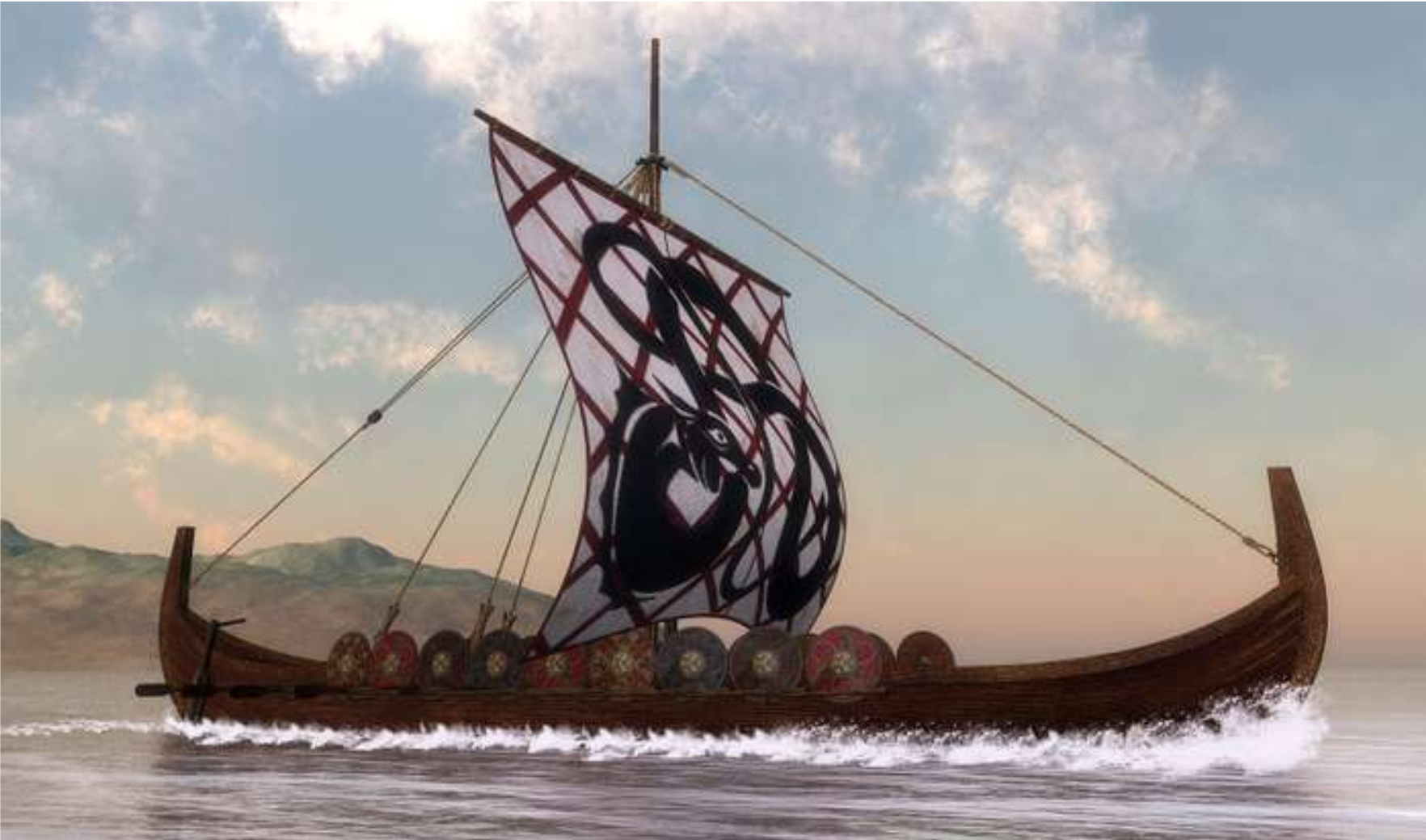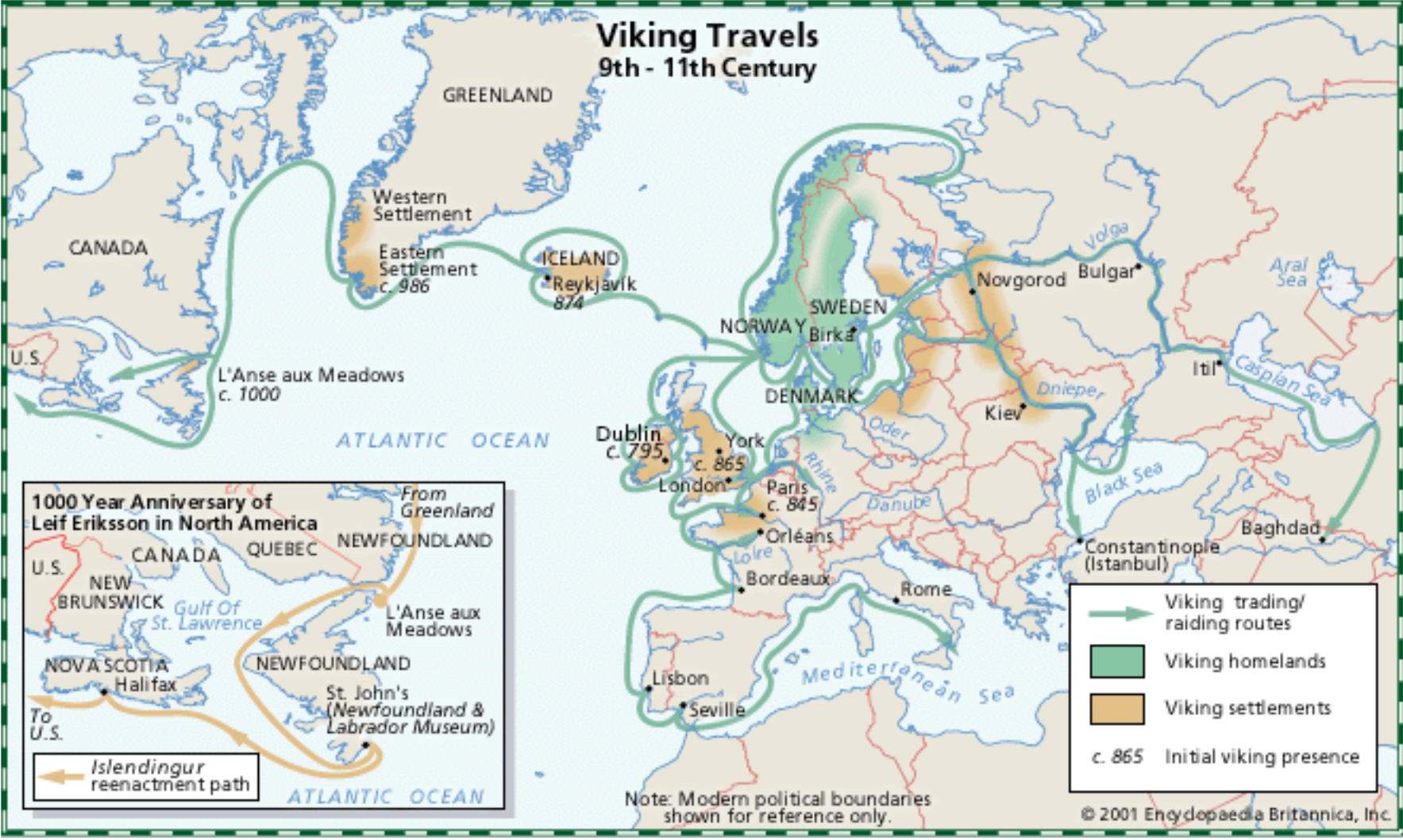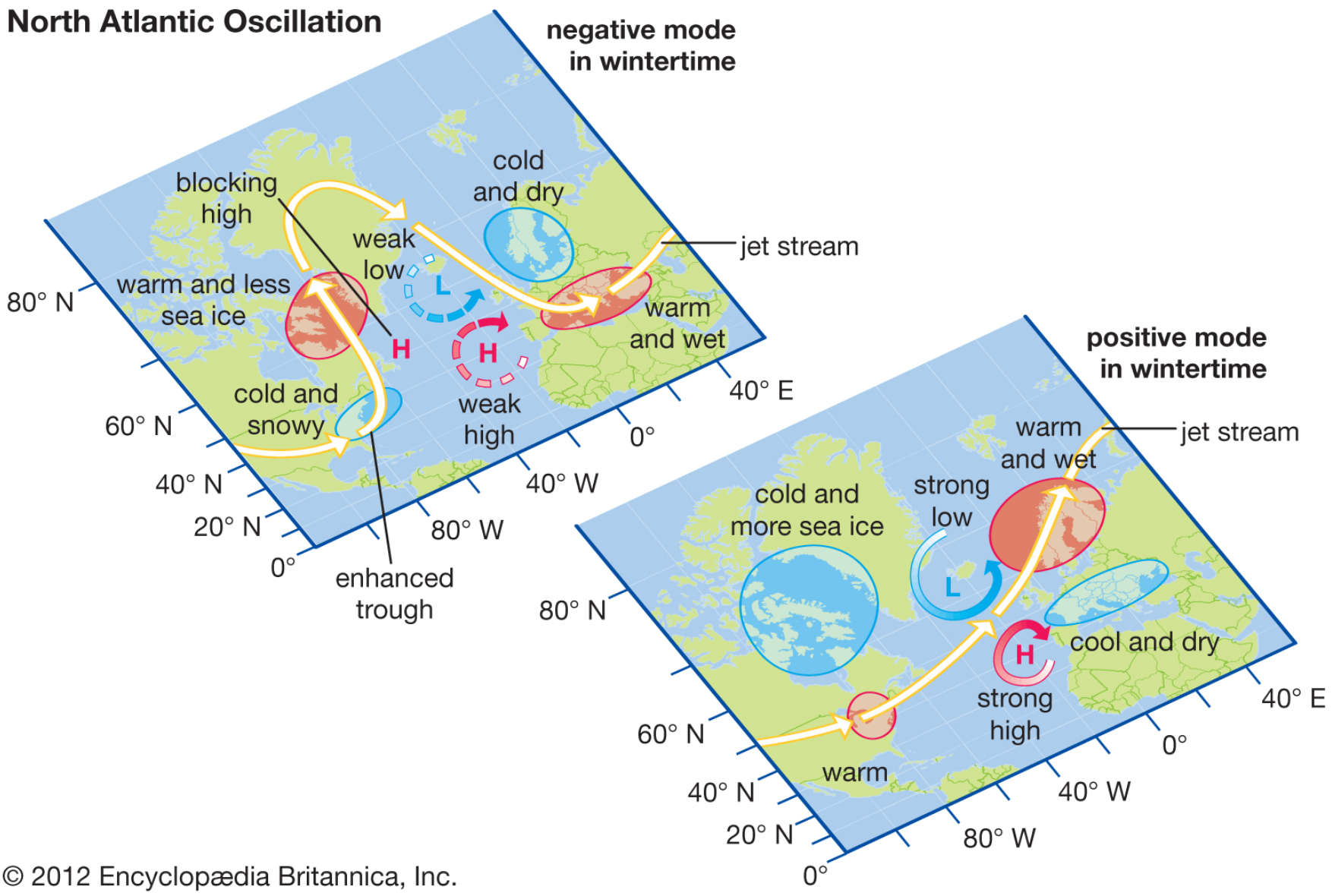What happened?
- The Norse were a group of people from Scandinavia who lived in modern-day Denmark, Sweden, and Norway from the late 8th century to early 11th century. The term “Norse” refers to settlers, traders, farmers, and seafarers who originally hailed from Northern Europe. While the terms “Norse” and “Viking” both refer to people from Scandinavia, Vikings are a more specific group of Norsemen who served as part-time warriors under their Jarls, noble chiefs. Vikings were both merchants and warriors who sometimes raided, pillaged, and conquered settlements throughout Europe. Norse voyagers who went on to establish settlements in Greenland were more likely refugees than pillagers.

An illustration of a Viking longship (from Encyclopedia Britannica, 2017).
- The Norse people began leaving their homelands to explore and settle new territories at the end of the 8th century. They first conquered a monastery on the island of Lindisfarne off the coast of England in 793 CE, officially starting the Viking Age, a period of Norse colonization throughout Europe and North America. The Norse then set out across the North Atlantic Ocean, establishing settlements in Iceland in the 9th century, in Greenland in the 10th century, and in Newfoundland, Canada by the 11th century (map below).
- The best-known Norse settlement in North America is L’Anse aux Meadows in present-day Newfoundland, or what the Norse called Vinland.
- The explorers established at least two settlements in southern Greenland: the Eastern Settlement and the Western Settlement.

Map of Viking raiding routes in Europe and Norse trading routes and settlements in Europe, Greenland, and North America (from Encyclopedia Britannica, 2020).
How is this related to climate?
- Warmer climate in Europe and North America from around 800 to 1200 CE made it easier for the Norse to leave Scandinavia and travel by sea to new lands.
-
- Longer growing seasons in Scandinavia led to population increases allowing more people to leave their homes to explore.
- Relatively warmer climate led to warmer ocean currents that reduced the amount of drift ice around Greenland and North America.
- Ocean currents carry drift ice from the Arctic to Iceland and Greenland. In cold climates, the currents carry ice south but in warmer climates the Gulf Stream, which carries warm water from the Gulf of Mexico to Europe, keeps drift ice at bay. Drift ice posed the greatest threat to sailors, so a reduction in drift ice would have allowed for easier sailing, hunting, and colonization.
- Lake sediment cores collected near Norse settlements in southern Greenland indicate that average annual temperatures rose about 1.5°C around the time the Norse settled there.
- Lake sediments record past climate through the accumulation of sediment and other material from the local environment. Specifically, researchers measured oxygen isotope concentrations in the exoskeletons of chironomids, a species of lake fly trapped and preserved in the sediment. Oxygen isotope concentrations vary depending on precipitation and temperature, so they are an important tool in studying variations in climate.
- This warmer climate may have been caused by a number of factors.
- This time period overlaps with the Medieval Quiet Period (MQP), a period from about the 8th to 14th century marked by the lack of cooling forces and a relatively stable climate.
- Different regions of the world experienced different MQP effects. In North America, Europe, and Asia, average temperatures increased by about 2℃ between 830 and 1100 CE. In South America and Australia, warming occurred between about 1160 and 1370 CE. On the other hand, the tropical Pacific saw a decrease in average temperatures.
- The MQP warming is currently thought to have been driven mainly by two factors: a decrease in volcanic activity and a decrease in the variability of solar irradiance.
- Volcanic eruptions release ash into the atmosphere, blocking out sunlight and leading to global cooling. Therefore, a decrease in volcanic activity means a decrease in the potential for global cooling. The 8th through 11th centuries had an unusually low amount of major explosive volcanic eruptions.
- Solar irradiance is the amount of sunlight that reaches Earth’s surface, so a decrease in its variability results in the climate being more stable. The most stable period of solar irradiance in the past 1500 years was from about 725 to 1025 CE, during the MQP.
- The North Atlantic Oscillation (NAO) may have also contributed to the warmer climate. The NAO is a natural fluctuation in atmospheric pressure that contributes to climate anomalies. During its positive mode, the NAO brings cold air to Greenland (illustration below). Around the time that the Norse were settling North America, some lake sediment evidence suggests that the NAO was in a predominantly negative mode.
- The NAO modes are based on the surface sea-level pressure difference between the Subtropical High (H) and the Subpolar Low (L). The positive mode reflects a large difference between a strong low pressure in the northern North Atlantic Ocean (L within a blue arrow in the diagram below) and strong high pressure in the central North Atlantic Ocean (H inside a red arrow). The negative mode reflects a small difference between a weak low pressure in the northern North Atlantic Ocean and weak high pressure in the central North Atlantic Ocean. Both modes are also associated with changes in the jet stream (yellow line).
- This time period overlaps with the Medieval Quiet Period (MQP), a period from about the 8th to 14th century marked by the lack of cooling forces and a relatively stable climate.

The effects of the NAO on precipitation and temperature in North America, Greenland, Europe, and northern Africa. Note that when the NAO is in its negative mode, Greenland and northern North America are warmer and there is less sea ice (from Rafferty, 2019).
References and additional resources
- Bradley, R. S., et al. “The Medieval Quiet Period.” The Holocene, vol. 26, no. 6, 2016, pp. 990–993. DOI: 10.1177/0959683615622552.
- Dacey, J. “Food Security Lessons from the Vikings.” Eos. 2021. https://eos.org/articles/food-security-lessons-from-the-vikings.
- History.com Editors. “Vikings.” History. 2009. https://www.history.com/topics/exploration/vikings-history.
- Kintisch, E. “Why Did Greenland’s Vikings Disappear?” Science. 2016. https://www.sciencemag.org/news/2016/11/why-did-greenland-s-vikings-disappear.
- Lasher, G. E. and Axford, Y. “Medieval Warmth Confirmed at the Norse Eastern Settlement in Greenland.” Geology, vol. 47, no. 3, 2019, pp. 267–270. DOI: 10.1130/G45833.1.
- Lieberman, B. and Gordon, E. Climate change in human history: prehistory to the present. London, Bloomsbury Academic, 2018.
- Mandia, S. A. “Determining the Climate Record.” State University of New York – Suffolk. 2018. https://www.sunysuffolk.edu/explore-academics/faculty-and-staff/faculty-websites/scott-mandia/lia/determining_climate_record.html.
- “North Atlantic Oscillation (NAO).” National Oceanic and Atmospheric Administration. n.d. https://www.ncdc.noaa.gov/teleconnections/nao/.
- Northwestern University. “Study Shows that Vikings Enjoyed A Warmer Greenland.” Phys.org. 2019. https://phys.org/news/2019-02-vikings-warmer-greenland.html.
- Rafferty, J. P. “North Atlantic Oscillation.” Encyclopedia Britannica. 2019. https://www.britannica.com/science/North-Atlantic-Oscillation.
- Rosen, W. “How the Vikings Became the World’s First Climate Profiteers.” Salon. 2014, https://www.salon.com/2014/05/24/how_the_vikings_became_the_worlds_first_climate_change_profiteers/.
- The Editors of Encyclopaedia Britannica. “Longship.” Encyclopedia Britannica. 2017. https://www.britannica.com/technology/longship.
- The Editors of Encyclopedia Britannica. “Viking.” Encyclopedia Britannica. 2020. https://www.britannica.com/topic/Viking-people.
- The Meteorological Office. “The North Atlantic Oscillation.” Met Office. n.d. https://www.metoffice.gov.uk/research/climate/seasonal-to-decadal/gpc-outlooks/ens-mean/nao-description.
